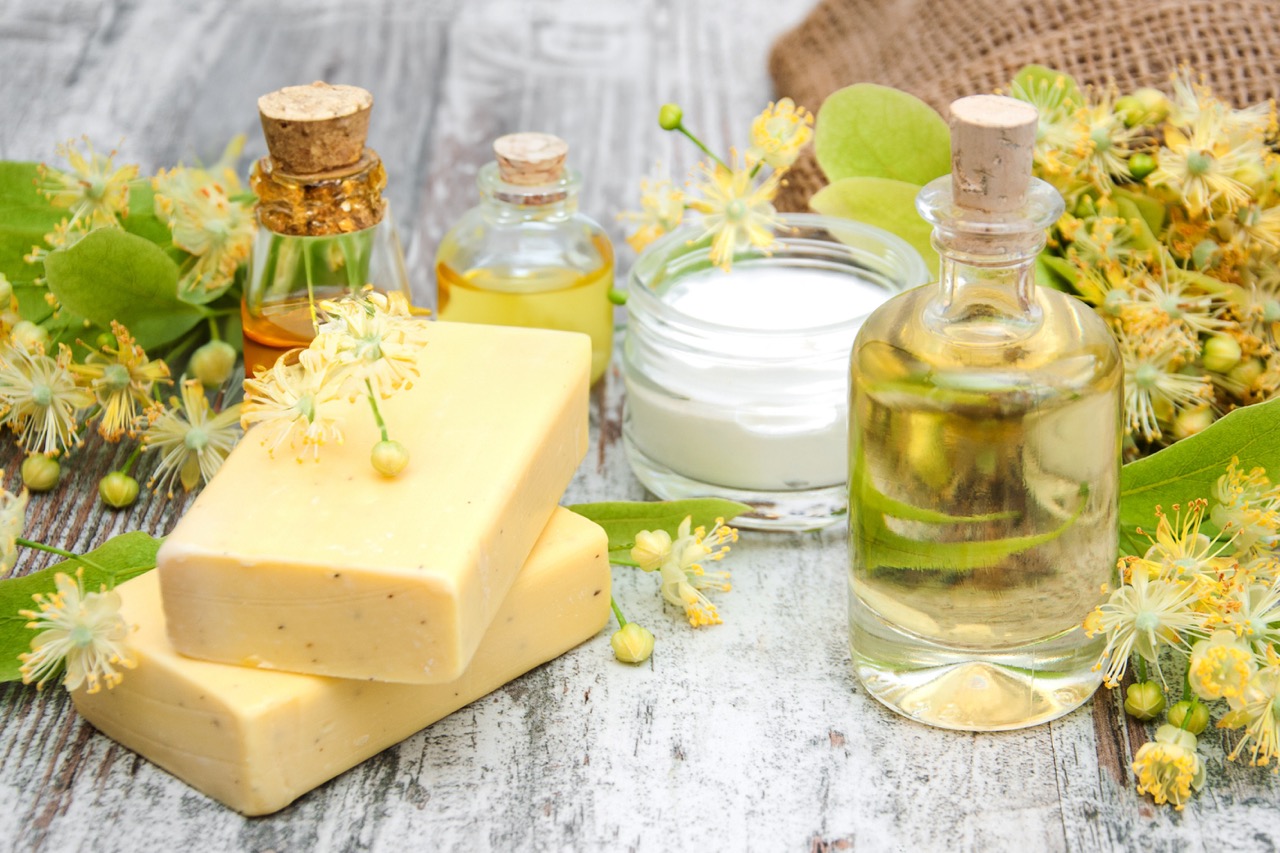Oil in soap making – Everything you need to know

Whether you’re a beginner or a seasoned soap maker, understanding the different types of oils and their characteristics is essential for creating high-quality soaps as the oils determine the properties of the soap. In this comprehensive guide, we’ll explore everything you need to know about oils in soap making.
Why is the use of oil in soap essential?
Using oils in soap making is essential because they undergo a chemical reaction known as saponification when combined with lye. This reaction produces soap, which has cleansing properties due to its ability to attract both water and oil. Additionally, oils contribute to the texture and consistency of the soap. They determine whether the soap will be hard or soft, as well as its lathering ability. Different oils have varying levels of hardness and produce different types of lather, allowing soap makers to tailor their products to specific preferences and skin types. Additionally, oils can add beneficial properties to the soap, such as antioxidants, vitamins, and antibacterial agents, depending on the types of oils used.
Different types of oils in soap
There are several main types of oil for making soap:
- Base Oils: these are the primary oils used in soap making and form the bulk of the recipe. Common base oils include olive oil, coconut oil, lard, or palm oil. Each base oil contributes unique properties to the soap, such as hardness, lather, and conditioning ability.
- Specialty Oils: specialty oils are often added to soap formulations to enhance specific qualities. Examples include shea butter, cocoa butter, avocado oil, castor oil, and sweet almond oil. These oils can add luxurious conditioning properties or increase lather.
- Essential Oils: while not technically oils, essential oils are highly concentrated plant extracts that are commonly used to add fragrance to soap. Popular choices include lavender, peppermint, tea tree, and citrus oils. Essential oils not only provide a pleasing scent but also offer potential therapeutic benefits.
Key properties of oil in soap
- Hardness. Some oils, such as coconut oil and palm oil, contribute to the hardness and longevity of the soap bar. Harder oils produce a firmer bar that lasts longer and holds its shape well. Conversely, softer oils like olive oil create a softer, more conditioning bar.
- Cleansing Ability. The cleansing ability of a soap is determined by its ability to remove dirt, oil, and impurities from the skin. Oils with a high percentage of saturated fats, such as coconut oil, are more cleansing and produce a rich lather. On the other hand, oils high in unsaturated fats, like olive oil, are gentler and more kinds to the skin.
- Conditioning. Some oils have excellent conditioning properties, leaving the skin feeling soft and not feeling dry after use. Oils like avocado oil, shea butter, and cocoa butter are renowned for their emollient properties, making them ideal choices for dry or sensitive skin types.

The most popular oils used in soap making
Olive oil
Olive oil produces a mild and gentle soap that is suitable for all skin types, including sensitive and delicate skin. It contains a high percentage of oleic acid, a monounsaturated fatty acid that forms a protective barrier on the skin’s surface, locking in moisture and preventing dehydration. Unlike harsher cleansing agents, olive oil gently removes dirt, impurities, and excess oil while maintaining the skin’s natural pH balance. Olive oil is a versatile ingredient that can be used in various soap formulations and recipes. It blends well with other oils and botanical extracts, allowing to create customized products tailored to specific preferences and skincare needs. However, it is worth knowing that a bar with only olive oil does not lather very much.
Coconut oil
Coconut oil is renowned for its ability to create a hard, cleansing soap with a rich lather. It contributes to the hardness and stability of the soap, resulting in a long-lasting bar that maintains its shape well. Coconut oil contains a high concentration of lauric acid, a saturated fatty acid that account for its excellent cleansing properties. Its produces a rich, bubbly lather that effectively removes dirt, impurities, and excess oil from the skin, leaving it feeling fresh and clean. However, due to its high cleansing nature, excessive use of coconut oil can lead to a drying effect on the skin. Therefore, it is often used in combination with other oils to balance its cleansing properties and add conditioning benefits.
Palm oil
Palm contains a high level of palmitic acid, a saturated fatty acid, which enhances the firmness of the soap and helps it maintain its shape over time. This makes palm oil an excellent ingredient for creating long-lasting soap bars that resist softening and disintegration during use. Additionally, palm oil gives creamy and stable lather, providing a satisfying cleansing experience.
👉 It is important! The production of palm oil has raised concerns regarding its environmental impact, including deforestation and habitat destruction. Therefore, it is crucial for soap makers to source palm oil from sustainable and ethical suppliers who adhere to responsible production practices. Or use an alternative like lard and/or a butter like cocoa butter or shea butter.
Avocado oil
Avocado oil is esteemed for its rich composition and beneficial properties. Abundant in vitamins A, D, and E, as well as monounsaturated fats, avocado oil brings a nourishing and conditioning touch to soap formulations. Its emollient nature makes it particularly suitable for crafting soaps that cater to dry or mature skin. Additionally, its antioxidant properties help to protect the skin from environmental stressors and promote a youthful complexion. When incorporated into soap recipes, avocado oil enhances the texture and richness of the lather, providing a great cleansing experience.
👉 Very similar properties to avocado oil are shown by sweet almond oil, also valuable in soap making.
The alternative – butters and waxes
Butters and waxes are valuable alternatives to oils in soap making, offering distinct properties and advantages.
Butters, such as shea butter, cocoa butter,and mango butter, are rich in emollients, vitamins, and fatty acids, providing nourishment to the skin. They contribute to a creamy texture and luxurious feel in soap bars, leaving the skin feeling soft and smooth.
Waxes, such as beeswax and soy wax, add hardness and structure to soap bars in small amounts, enhancing their durability and longevity. They also lend solidity to soap compositions, potentially stabilizing the lather.
How to use oils in soap making?
Using oils in soap making involves several steps to ensure they are properly incorporated into the soap recipe and contribute to the desired characteristics of the final product.
- Selecting Oils. Choose a combination of oils based on their properties and the desired characteristics of the soap. Consider factors such as cleansing ability, conditionoing properties, lathering ability and hardness.
- Measuring oils. Measure the oils according to the recipe you are following. Use a kitchen scale to do this as accurately as possible.
- Melting Solid Oils and Butters. If using solid oils or butters, melt them gently using a double boiler or microwave until they are completely liquefied. Be cautious not to overheat the oils to avoid scorching or altering their properties!
- Combining Oils. Once all the oils are measured and any solid oils or butters are melted, combine them in a large mixing container. Stir the oils together thoroughly to ensure they are evenly distributed.
- Preparing the Lye Solution. In a separate container, prepare the lye solution by carefully mixing lye (sodium hydroxide) with water according to the safety guidelines.
- Combining Oils and Lye. Once the lye solution has cooled to the appropriate temperature, slowly pour it into the container of melted oils while stirring continuously. Use a stick blender to emulsify the oils and lye together until the mixture reaches trace (a stage where it thickens to a pudding-like consistency).
- Adding Fragrance and Additives. If desired, add fragrance oils, essential oils, or other additives such as colorants, herbs, or exfoliants to the soap batter. Stir well.
And the other steps, repeatable each time the soap is made and not strictly related to the oils:
- Pouring into Molds. Once the soap mixture has reached trace, pour it into soap molds lined with parchment paper or silicone molds. Tap the molds gently on the countertop to release any air bubbles and smooth the surface of the soap.
- Molds Allow the soap to firm in the molds for 12 to 24 hours, during which time it will harden and finish the saponification process. After becoming firm but not rock hard, unmold the soap and cut it into individual bars if necessary.
- Curing and Storage. Place the cut soap bars on a rack in a well-ventilated area to cure for 4 to 6 weeks. During this time, the soap will continue to harden and mellow, resulting in a mild and long-lasting bar. Once fully cured, store the soap in a cool, dry place until ready to use or package for gifting or sale.
Summary
That’s all the most important stuff! As you can see, the choice of oils plays a pivotal role in shaping the characteristics and qualities of the soap. Armed with this knowledge, you are equipped to embark on your creative endeavors, producing exquisite handmade soaps that delight the senses and nurture the skin.
Don’t forget to check out our recipe database. You will find over 30,000 recipes there.
Also check out the other articles-guides. With them you will avoid many mistakes!


